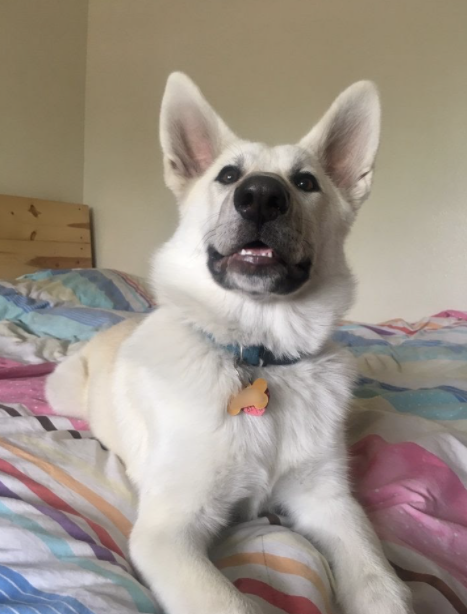Pet adoption rates rise during COVID-19
Cuyahoga County Animal Shelter helps dogs like Mantou find new homes.
At the beginning of the pandemic, people across the country were trying everything to beat the quarantine blues. Flour and eggs flew off the shelves for baking, workout equipment was out of stock for miles and art supplies orders were backed up for weeks.
But who knew the most in demand quarantine find was a new furry friend?
“Adoption rates have skyrocketed,” says Animal Shelter Administrator Mindy Naticchioni from Cuyahoga County Animal Shelter. “Dogs are being adopted quickly and all the dogs we sent into temporary foster homes (about 70) when we closed in March were adopted.”
During the quarantine, the Cuyahoga County Board of Health decided that local animal shelters would not be permitted to have adoptions at their facilities, leaving many shelters with an impossible task of drastically reducing animal capacity before the shutdown. This new policy forced shelters to switch to a “foster to adopt model,” where foster families took in pets at the beginning of quarantine and were then brought back to the facility to officially be adopted by a loving family at the shelters’ reopening.
“The coordination of the foster to adopt took a lot of work,” Naticchioni reiterated, “We split our team into four so we didn’t all work together, there was a lot of time emailing and calling. It made shelter operations and communication more challenging, but even more critical.”
Despite the challenges of new adoption policies, the operation has been a great success for Cuyahoga County Animal Shelter and other shelters across the nation. The pet adoption process during the pandemic also looks different from what owners have been used to in the past. Cuyahoga County Animal Shelter is one of few shelters now offering walk-in adoptions. Coronavirus policies pertaining to potential adopters inside the Cuyahoga shelter include wearing a mask and social distancing.
“We do have limitations on visitors, different walk patterns through the kennel to prevent crossing if possible, and new cleaning protocols,” Naticchioni explains. All shelters in the Cleveland area have noted that their facilities have similar COVID-19 policies and extensive cleanings in order to keep volunteers, adopters and pets safe.
Some Case Western Reserve University students, like Jia Han, a first-year from Denver, have adopted a pet during the pandemic and experienced what it’s like to be a new pet owner under coronavirus conditions. Han adopted their dog, Mantou (馒头), which means “steamed bun” in Chinese, during the quarantine.
“We decided to get a dog over quarantine because we were all home and had lots of time to situate her and train her,” Han says. But being a new pet owner is not an easy job. “The biggest challenge of having a new pet during COVID was definitely socializing her. She came home to us at eight weeks and we couldn’t really take her out to meet new people and other dogs so she’s still kind of nervous around strangers.”
Despite the typical difficulties of acclimating a new puppy to their environment, a loyal companion is the best medicine for stress.
“Having a new dog definitely diverted our attention from the pandemic,” Han expresses. “In a way, she transformed the stress we had about COVID into stress about her.”
Mantou has certainly found a great forever home where she can eat her favorite treat—ice cubes—all day long and spend time with her family.
Naticchioni expressed that CWRU students can help support local animal shelters most of all by “spreading the word about the importance of dog licensing.”
“Dog licensing funds our shelter and plays a pivotal role in reuniting lost pets with their owners. When dogs come in wearing a current year dog license they are held for 14 days to locate their owner as opposed to 72 hours without.”
Naticchioni also notes that donations are always welcome. Follow Cuyahoga County Animal Shelter on their social media platforms for more information on how you can help pets find forever homes during the pandemic.


